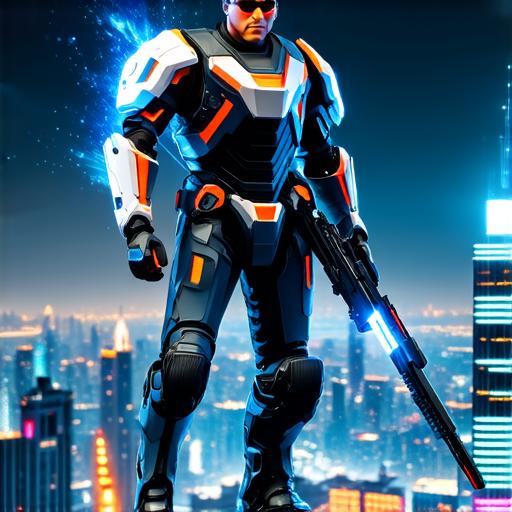The world of action-adventure games is vast and diverse, with countless titles ranging from classic favorites like The Legend of Zelda to modern blockbusters like Red Dead Redemption 2. Whether you are a seasoned game developer or just starting out, understanding the ins and outs of building these types of games can be a daunting task. That’s where Unreal Engine comes in.
Unreal Engine
Unreal Engine is a powerful tool for creating immersive, interactive experiences across multiple platforms, including PC, console, mobile, and virtual reality (VR). It offers a wide range of features and tools specifically designed for action-adventure game development, making it an ideal choice for those looking to create games in this genre.
In this course
In this course, we will explore the key concepts and techniques involved in developing action-adventure games using Unreal Engine 5, covering everything from world design and asset creation to game mechanics and scripting.
Getting Started with Action-Adventure Game Development in Unreal Engine 5
Before we dive into the specifics of action-adventure game development, let’s take a moment to understand what makes this genre so popular. Action-adventure games typically involve exploring an open world, solving puzzles, and engaging in combat with enemies. These games often have a strong narrative component, immersing players in a rich storyline filled with memorable characters and settings.
To get started with action-adventure game development in Unreal Engine 5
You will need to install the software and create a new project. Once you have your project set up, you can begin designing the world, creating assets, and writing code to bring your game to life.
World Design and Asset Creation
The first step in any action-adventure game development project is world design. This involves creating the environment in which players will interact, including terrain, buildings, and other structures. In Unreal Engine 5, world design can be done using a variety of tools, including the Landscape Editor, Terrain Editor, and World Composition.
In addition to world design, asset creation is another crucial aspect of action-adventure game development. Assets are the visual elements that make up your game world, such as characters, weapons, and environmental objects. In Unreal Engine 5, assets can be created using a variety of tools, including the Sculpting Brushes, Mesh Editor, and Texture Paint.
World Design Techniques
There are several techniques that can be used to create effective world design in an action-adventure game. One important technique is to use layers to separate different elements of the environment, such as terrain, buildings, and vegetation. This allows for easy editing and customization of individual elements without affecting the rest of the world.
Another technique is to use lighting and weather effects to enhance the atmosphere and mood of the game world. For example, using dynamic weather systems that change based on time of day or location can add depth and realism to the environment.
Asset Creation Techniques

There are several techniques that can be used to create effective assets for an action-adventure game. One important technique is to use modular design, where individual elements can be combined to create larger objects or structures. This allows for easy customization and reuse of assets throughout the game world.
Another technique is to use animation and particle effects to add dynamic elements to assets, such as explosions or weapon fire. These effects can help bring the game world to life and enhance the player’s immersion in the game.
Game Mechanics and Scripting
In addition to world design and asset creation, action-adventure games require a solid understanding of game mechanics and scripting. Game mechanics refer to the rules and systems that govern how players interact with the game world, such as movement, combat, and puzzle-solving.
Scripting is the process of writing code to control the behavior of game objects and characters. In Unreal Engine 5, scripting can be done using Blueprints or C++ code, depending on your level of experience and preference.
Game Mechanics Techniques
There are several techniques that can be used to create effective game mechanics in an action-adventure game. One important technique is to use a clear and intuitive control scheme that allows players to easily navigate the game world and interact with objects.
Another technique is to use difficulty scaling, where the level of challenge increases as the player progresses through the game. This can help keep the game engaging and prevent players from getting bored or frustrated.
Scripting Techniques
There are several techniques that can be used to write effective scripting code for an action-adventure game. One important technique is to use modular design, where individual functions can be combined to create larger systems. This allows for easy maintenance and reuse of code throughout the game.
Another technique is to use debugging tools to identify and fix issues in the scripting code. Unreal Engine 5 provides a variety of debugging tools, including breakpoints, variables, and console commands, to help identify and fix problems quickly.
Conclusion
In conclusion, action-adventure game development is a complex and challenging task that requires a deep understanding of world design, asset creation, game mechanics, and scripting. With the powerful tools and features offered by Unreal Engine 5, however, it’s easier than ever to create these types of games.
Whether you are just starting out or a seasoned game developer, this course on action-adventure game development in Unreal Engine 5 is the perfect place to start. By following the guidance and best practices outlined in this article, you will be well on your way to creating your own immersive, interactive experiences for players to enjoy.
FAQs
Here are some frequently asked questions about action-adventure game development using Unreal Engine 5:
- What software do I need to create an action-adventure game using Unreal Engine 5?
- Can I create an action-adventure game using only Blueprints or C++ code?
- What are some real-life examples of action-adventure games built using Unreal Engine 5?
You will need a computer with a minimum of 8 GB of RAM and a dedicated graphics card like Nvidia GeForce GTX or AMD Radeon RX series to run Unreal Engine 5.
Yes, you can create an action-adventure game using either Blueprints or C++ code, depending on your level of experience and preference.
Some real-life examples of action-adventure games built using Unreal Engine 5 include Halo Infinite, Fortnite, and Minecraft Earth.



